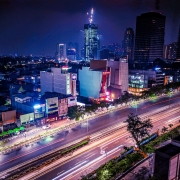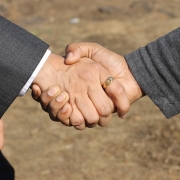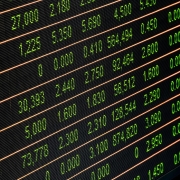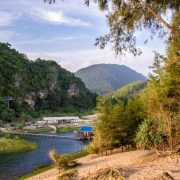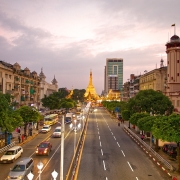How did Giant become the biggest bicycle manufacturer in the world?
Paper 1: Understanding the Global Economy (1945-2000)
Section B: Essay Writing
Theme II Chapter 3: Rise of Asian Tigers from 1970s to 1990s [South Korea and Taiwan]
Humble beginnings: A SME run by family and friends
In 1972, a 36 year-old engineer King Liu founded Giant with a group of associates, including Tony Lo, in Taichung (臺中). Lo was a business graduate from the National Taiwan University. Interestingly, Liu cycled to work at first to understand his product better.
In 1977, Liu secured a contract to produce bicycles for an overseas American company Schwinn, which was known for its 10-speed steel machines. Giant then functioned as an Original Equipment Manufacturer (OEM). Liu, who was fluent in Japanese, visited Japan to study the bicycle production process, replicating suitable work practices at Giant.
An unexpected turn of events: Turning setbacks into opportunities for success
In 1981, Giant set up its own bicycle brand as an Original Brand Manufacturer (OBM). It was a bold and unusual move as products that were manufactured in Taiwan were still viewed as low-quality and cheap.
Five years later, Giant brought its bicycles to the global market, starting with the Netherlands. Lo had identified Netherlands as a suitable European headquarters due to its geographical location, comprehensive infrastructure and integrated transport network. From there, Giant exported to other European markets. By the mid-1980s, Giant exported nearly 10 million bicycles a year.
The own-branding strategy was intensified when Schwinn shifted its OEM orders to its joint China’s company (China Bicycle Company) in 1985. Under this adverse condition, Liu steered the company into a new direction, through rapidly expanding its overseas branches around the world, in order to fill up the excess capacity generated by Schwinn’s withdrawal. The overseas branches were all targeted on pursuing entrepreneurial profit by promoting its own-brand Giant bicycles. Its overseas branch was established in Netherlands in 1986, the Us in 1987, Japan in 1989, Canada and Australia in 1991, and mainland China in 1992.
An excerpt from “Entrepreneurship and Taiwan’s Economic Dynamics” by Fu-Lai Tony Yu.
In the 1985, the US-based Schwinn switched to a Chinese supplier to keep production costs low. As a result, nearly three-quarters of Giant’s revenue had been affected. Yet, Giant did not relent. Instead, the company capitalised on the low production base in China, setting up two production plants in China, namely in Shanghai (上海) and Jiangsu (江苏).
Close collaboration with the government
In 1986, Giant launched a joint project with the government-funding Industrial Technology Research Institute (ITRI). They explored use of advanced materials to create carbon fiber bicycle frames. Giant also worked on other technology diffusion projects for aluminum welding with Chun Shan Institute of Science and Technology (CSIST).
Giant’s R&D efforts had paid off as tts revenue rose to over NT$ one billion.
In 1987, Giant pioneered the mass production of carbon bicycles, particularly the model called Cadex 980C. Lo dubbed it ‘Project 88’. Giant had applied computer-aided design and volume production techniques to manufacture these carbon fiber road bicycles. By 1991, Giant manufactured 20 thousand units of carbon bicycles.
Now, Giant one of the top bicycle manufacturers in the world.
Giant thinks of itself as an innovator in the fields of production and design, as well as competitive strategy. Giant was one of the first to upgrade parts and begin exporting them when Taiwan’s market became too costly. Giant was also the first Taiwanese company to use chrome alloy steel in their frames and to produce single-piece graphite bicycle frames.
An excerpt from “Strategy, Structure, and Performance of MNCs in China” by Yadong Luo.
What can we learn from this article?
Consider the following question:
– How far do you agree that Giant’s successes in export promotion were the result of Confucian culture?
Join our JC History Tuition to learn more about the rise of Asian Tiger economies and the Global Economy. The H2 and H1 History Tuition feature online discussion and writing practices to enhance your knowledge application skills. Get useful study notes and clarify your doubts on the subject with the tutor. You can also follow our Telegram Channel to get useful updates.
We have other JC tuition classes, such as JC Math Tuition and JC Chemistry Tuition. For Secondary Tuition, we provide Secondary English Tuition, Secondary Math tuition, Secondary Chemistry Tuition, Social Studies Tuition, Geography, History Tuition and Secondary Economics Tuition. For Primary Tuition, we have Primary English, Math and Science Tuition. Call 9658 5789 to find out more.




